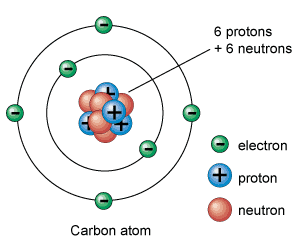Behaviour of atoms is hard to study due to the incredibly small particles that scientists need to work with. Additionally, at the atom or subatomic level, things behave weirdly, which makes understanding what happens even harder. It is known that atoms consist of several building blocks, including a core of protons and neutrons encapsulated by an electron cloud. Electrons are used to bind atoms together, but they can also detach from an individual atom. The latter process is called ionization, and it turns an atom into an electrically charged ion. Removing an electron from an atom has now, for the first time, been witnessed by scientists.
Properties
Properties
Firstly, it is necessary to make clear what electrons actually are. They have long been regarded as electrically negative particles swarming around a solid core of positively charged mass, but more recently, scientists have found that they behave more like waves. Even more recently, we have come to understand that electrons, just like other subatomic particles, can behave both like waves and particles at the same time, which has been described in quantum physics as wave-particle duality. This is quite hard to imagine, but it is accepted to be true, because the theory accurately predicts what we find in experiments. An additional quantum theory, known as the uncertainty principle, renders it impossible to precisely know where an electron is located around an atom: there is some sort of physical limit, unrelated to our own detection techniques, that prevents us from measuring things on such a small scale with absolute certainty.
Superposition
Those weird quantum laws introduce another principle of quantum states: superposition. It dictates that a particle, such as an electron, exists in all possible theoretical states at the same time, until it is measured. After measuring the characteristics of an electron it will attain the properties of just one configuration: it would therefore be possible to have an electron existing in both particle and wave state, but after measuring, it, it only behaves as a particle or wave. Because of superposition and the uncertainty principle, it is hard to precisely determine when an electron leaves an atom. But scientists from Vienna University of Technology have found a way.
Method
By using highly concentrated laser beams, it is possible to hit an atom with the required energy to kick an electron out of the atomic cloud. Laser beams are waves of light, even though light also exists in particle form as dictated by quantum rules, which means they form a wave pattern with a specific wavelength. The scientists used a special laser that shoots light beams with two different wavelengths. It helped them to calculate the properties of an electron that leaves an atom; by calculating the quantum behaviour of the electron in accordance with the light waves, scientists can reconstruct the events that lead up to an electron being kicked out of the atom.
Waves
So what actually happens during the removal of an electron from an atom? Because it is in superposition, it consists of many different theoretical states, which means it does not simply remove itself from the atom at one time point. It means that there are quantum states in which the electron is both inside and outside the atom. To make it even more puzzling, it also means that there are several time points at which the electron is leaving the atom. Even though this may sound weird, again, these statements abide quantum theory, and are found to be in agreement with experimental observations. Quantum states can be represented by calculating the wave function: because all particles behave like waves as well, it is possible to create a formula that accurately represents the wave behaviour of an electron, thereby calculating its actual quantum behaviour.
 |
| From point A to point B, starting at time A and ending on time B. In quantum physics, it is all but a straight line: it is all possible lines at the same time. |
Birth
Using the aforementioned double-wavelength laser and complex theoretical models, scientists managed to calculate how much time it takes for an electron to leave an atom when hit with light waves. When two waves, those of the laser and those of the subatomic particles, come together, they can reinforce each other or cancel each other out. This so-called wave interference is important in quantum physics due to the wave-like properties of particles, and they give us ways to calculate particle behaviour. I have explained quantum interference at length in an earlier piece. Using their tools, the scientists first calculated the state of the electron when still present inside the atom. Measuring these properties means gaining information about energy levels regarding the electron inside the atom, precisely pinpointing when the ionizing energy of the laser beams asserted its effect and kicked the electron out of the atom.
Time
After all the calculations were performed, scientists were able to reconstruct exactly what happens after a laser beam kicks an electron out of an atom. Apparently, it takes about 10 attoseconds to remove the electron, which equals to ten billionths of a billionth of a second: an unimaginably short time span. Nevertheless, this is the time scale at which subatomic processes take place.
 |
| A light wave from a laser (red) hitting an atom (blue), resulting in expulsion of a pair of electrons (green) |
Application
While these experiments are interesting, complex and possibly even confusing, the question remains whether we are able to do anything useful with the information. Even though the scientists do not mention any practical use, getting down to the unimaginably short time scales for subatomic measurements will help us explain the world around us in more detail. Additionally, electron movement is important in chemistry, where electrons govern atom binding.


No comments:
Post a Comment